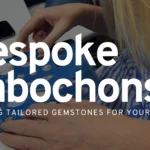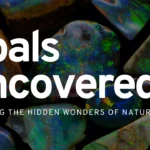Your basket is currently empty!
10 Must-Know Facts About Labradorite

We sat down with Chalmers Gems Director and Gemmologist Marie to talk about your favourite Gemstone, Labradorite! Here are ten facts you need to know about this flashy Gem.
1.
Labradorite is a member of the Feldspar family. The Feldspar group of Minerals is a large group within the Silicate Minerals family, the largest group of Minerals in the world. They make up over 50% of Earth’s crust, but they aren’t all as beautiful Gems we know and love! As well as Labradorite, other popular Gemstones in the Feldspar family include Moonstone, Sunstone and Amazonite. It is the chemical makeup of these Gems that categorises them as Feldspar.
2.
Labradorescence is the optical effect/phenomena belonging to Labradorite. It is the only Gem that can have this name. Other Feldspar Minerals have their own name for their optical phenomena.
3.
Labradorite is found worldwide. Originally it was first located in Labrador, Canada, in the late 1700s, hence its name. It is now found worldwide. The majority of Chalmers Gems Labradorite comes from Madagascar.
4.
Labradorite comes in a range of different body colours. Labradorite can have a very light grey body colour to a dark, almost black colour. The Labradorite’s body colour enhances the flash seen within the Gem. The darker the body colour, the clearer the Labradorescence.
5.
Spectrolite is Labradorite’s sister, which has an extremely fine structure giving it this exceptional flash. It is much rarer and therefore more expensive. Spectrolite has a very intense dark colour and demonstrates some of the best Labradorescence in the world. Spectrolite is found in Finland.
6.
Labradorite is constructed of lots of layers. The colour of the flash or Labradorescence is determined by the thickness of the layers in which Labradorite Labradorite can present a range of colours, including the following:
-
- Gold
- Blue
- Purple
- Orange
- Green
7.
A couple of elements determine the value of Labradorite. The flash, body colour and size. If we had a piece of Labradorite with dark body colour and a significant area of Labradorescence, that would cost more than the same size piece with a light body colour and a small patch of flash. Whereas Spectrolite is found in smaller pieces, its value is held in the quality of the Labradorescence.
8.
Labradorite is very versatile and can be cut into Collectables, Carvings, Cabochons and Beads. There is nothing it is not used for! Starting with the Rough Mineral, the skilled Cutter will look at the flash and map out the area to cut and carve to ensure the best and brightest sites of Labradorescence are captured.
9.
The flash or Labradorescence only occurs in two directions, so it takes a skilled Cutter to assess the rough material, retain maximum beauty, and minimise weight loss. Here at Chalmers Gems, we like to provide top-quality Labradorite, and the cutters we use are experts in cutting Labradorite.
10.
A unique characteristic of Labradorite is that it can be found in varying sizes with excellent Labradorescence, from small pieces that can be cut into tiny Beads bursting with flashes to large pieces with vast areas for Labradorescence; these look fabulous as giant Freeforms!
Follow us on:
2 responses to “10 Must-Know Facts About Labradorite”
-
Enjoyed reading this, it’s so interesting. Please bring more blogs to us. Thank you.
-
It was so interesting and informative. I really enjoyed reading all these facts. Please do keep up with these blogs it really is fascinating. Thank you marie for your in depth explanations. I learn so much from you and am appreciative of you sharing your knowledge with us. Very interesting thank you. X





Leave a Reply